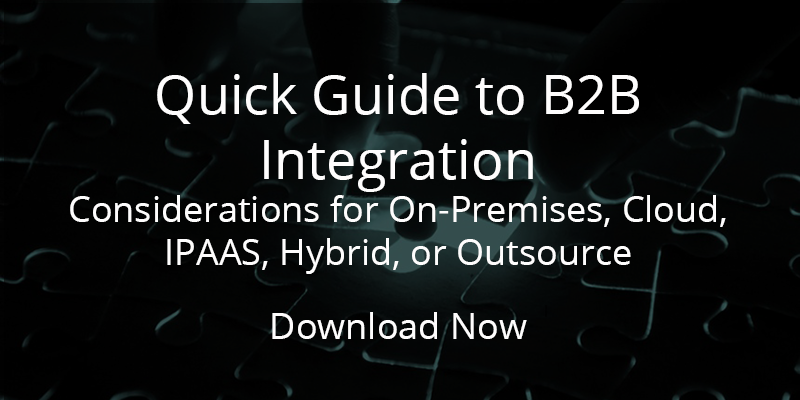
Not all integrations are created equally. Some integrations might be a better fit for your organization than others. Two important integration categories that come to mind are event-driven and data-driven integration.
This article will explore what the differences are between the two integrations. We will also discuss which type is right for you, and why it does not have to be an either/or proposition.
What Is Event-Driven Integration?
Event-driven integration refers to an integration triggered by an event that takes place in one system. That event triggers a pre-defined corresponding event in another system.
Here is an example. Suppose you receive a new order. That event tells the ordering system to notify the warehouse that pickers must fill the order. Then, the order is dispatched to the truck or ship to be transported to the customer.
Event-driven integration refers to an integration due an event being triggered in one system that triggers another event in another system.
For some organizations, event-driven integration is an excellent fit because their business is built on systems in which data must be integrated based on events triggered by actions. However, event-driven integration does not allow for easy and quick information synchronization. Many event-driven integration systems do not allow for a fully functional integration between two systems because their setup is based on one event triggering another.
Questions about EDI integration and consulting? Ask me anything.
The Remedi AI Assistant may make mistakes. Please contact us with questions.
What Is Data-Driven Integration?
Rather than being based on an event, data-driven integration is spurred by a change in information in one system that requires a change in another system. Here is an example to illustrate. You do business with a new customer. By creating a new entry in your order fulfillment system, you will trigger an update in your CRM to reflect the customer’s order history.
Data-driven integration is spurred by a change in information in one system that requires a change in another system.
Data-driven integration allows you to achieve enterprise-level data integration with ease. Maintenance is also simple with data-driven integration.
What Type of Integration Is Right for You?
With data-driven and event-driven integration, sometimes, one type of integration is more appropriate or useful than another. However, that does not mean there is no room for both data-driven and event-driven integration to operate within the same firm.
Event-driven integration is a better fit for instances where you need point-to-point data transfer, such as when an event takes place in one system and you want to set off an event in another system. Data-driven integration is more suitable for situations in which you want to keep your information synchronized regardless of what other situations are unfolding (for example, you need your ERP and CRM to have the same data on your customers, or else chaos will ensue). There might be times in which you will need event-driven integration (such as when your customers place an order) and data-driven integration (because you must keep your information the same across systems).
There might be times you will need data-driven and event-driven integration.
To maximize your business’ information, you need to know when to use event-driven integration, when to use data-driven integration, and when it might be a good time to use both. To learn more about data integration, contact us today.



